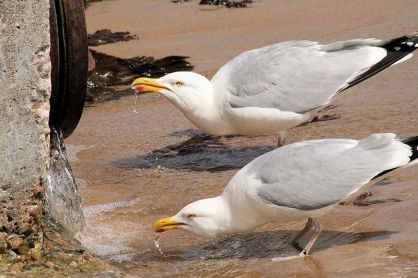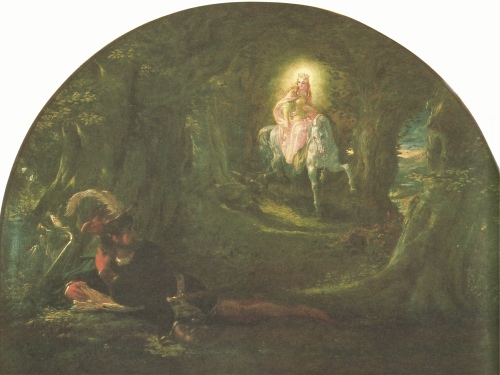
Herring gulls drinking, picture taken by John Haslam and licensed for use under CC 2.0.
Species Mentioned: A group of less than stellar warriors are compared with a flock of mewling seagulls (Larus argentatus). Sorry guys.
Source: A poem by the historical Taliesin, one of the most famous Welsh bards ever to live. This is impressive since (i) he may not have been Welsh (ii) he would have taken offence at the term ‘bard’ (iii) he may never have existed.
Date of Source: Traditionally c.550-600, but perhaps centuries later.
Highlights: The comparison with seagulls is not a flattering one for the Cumbrian heroes but Taliesin tells it like it is: ‘They didn’t fight well, there’s no point denying it’. Ouch.



